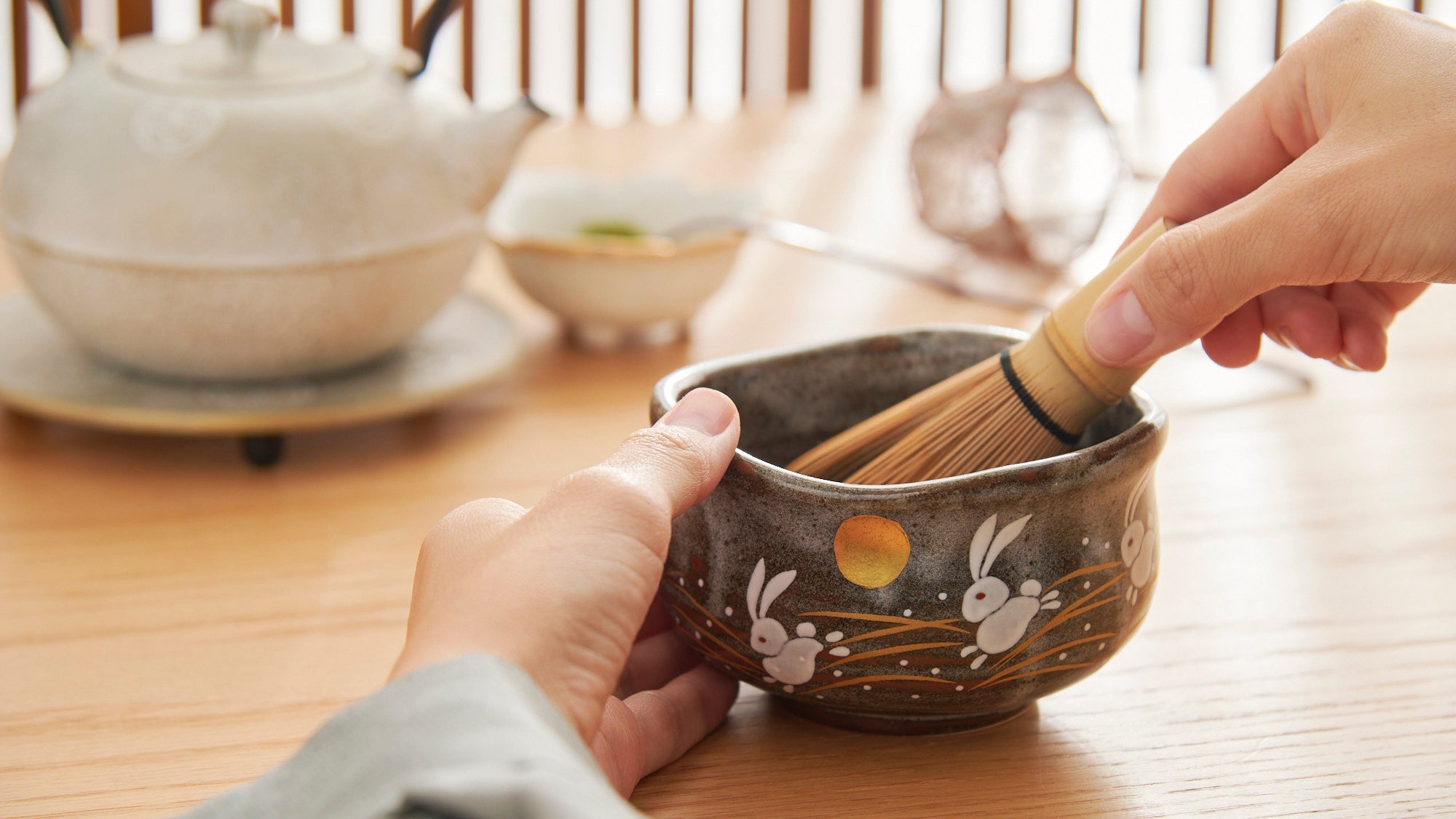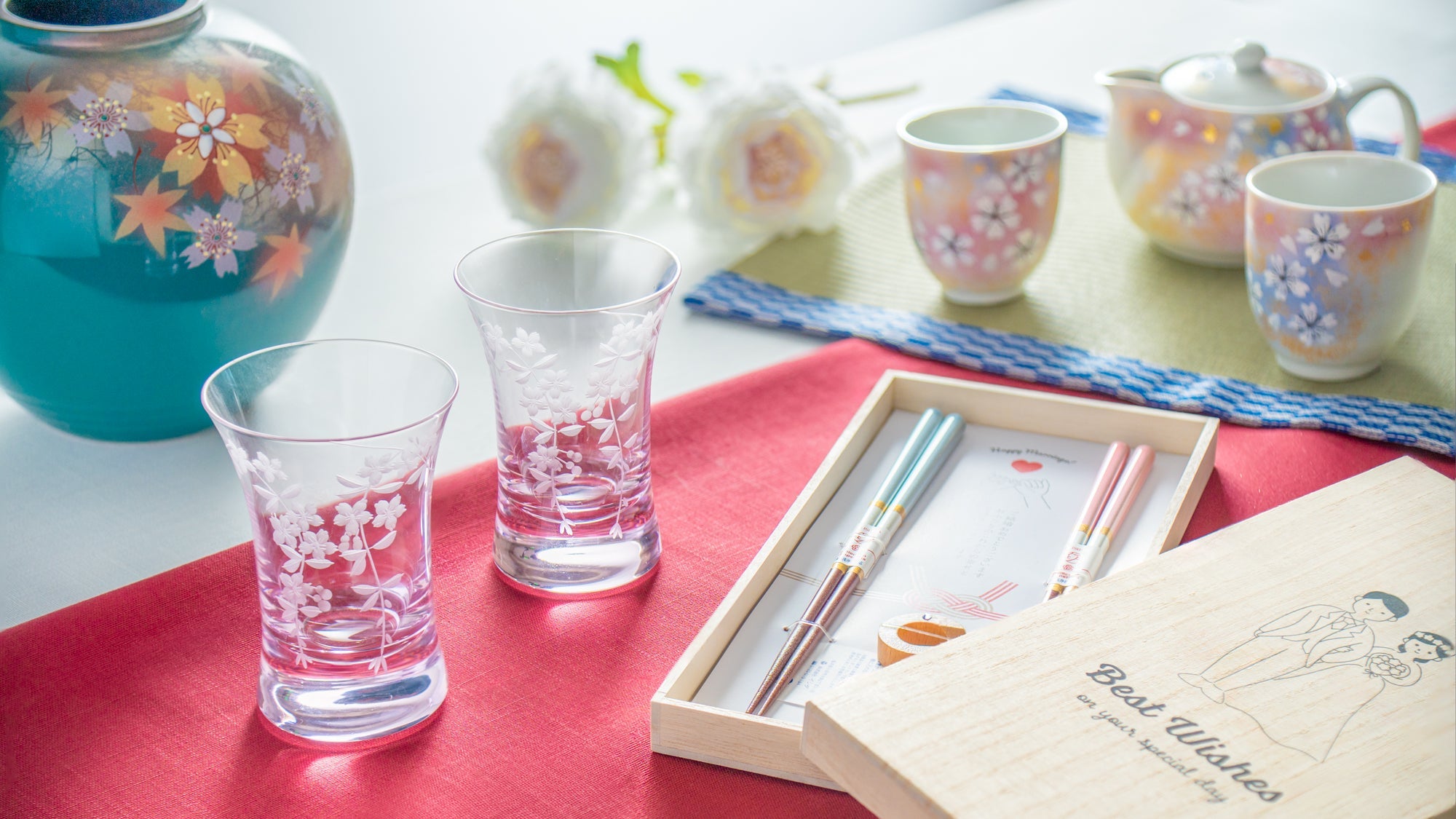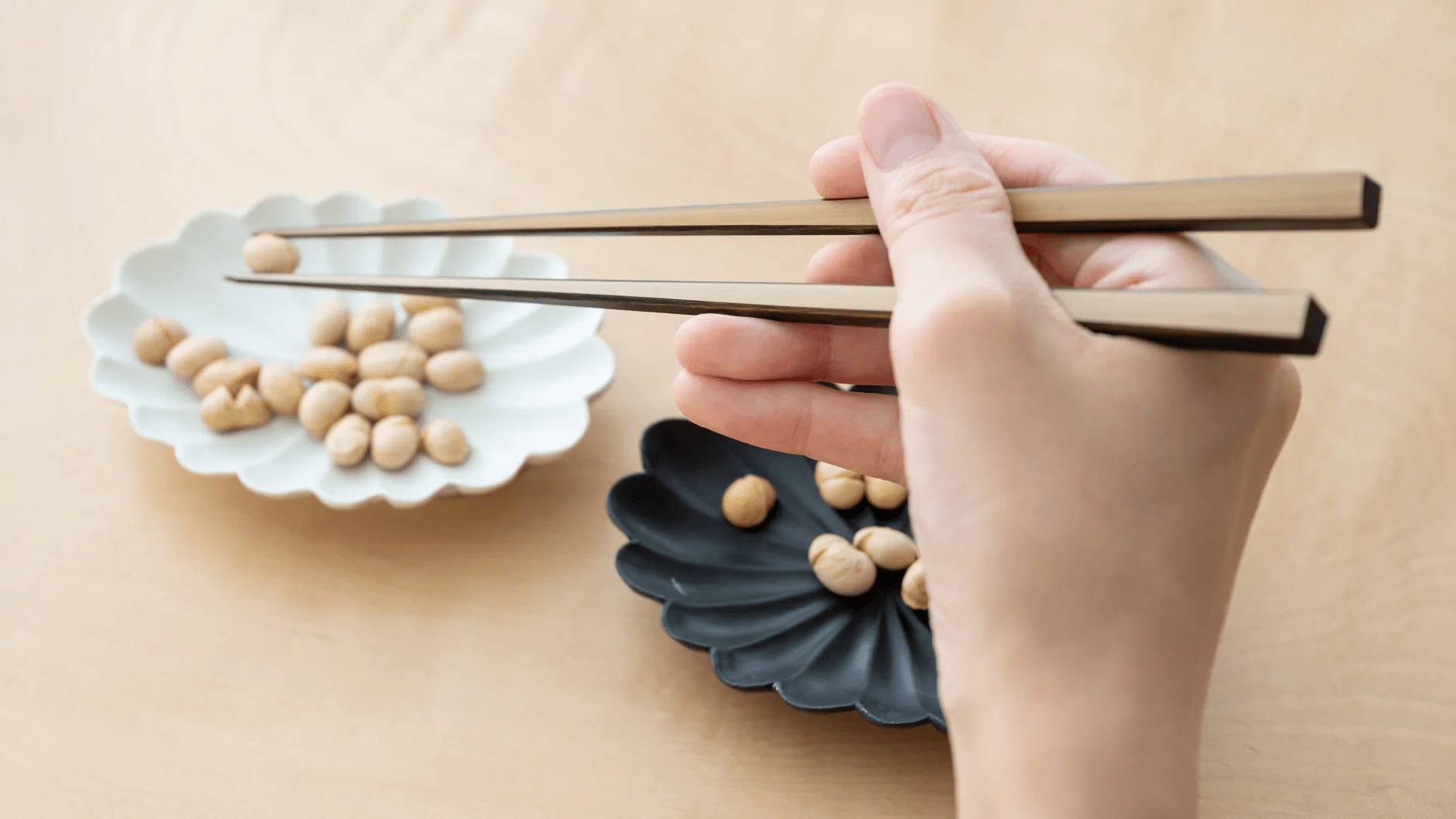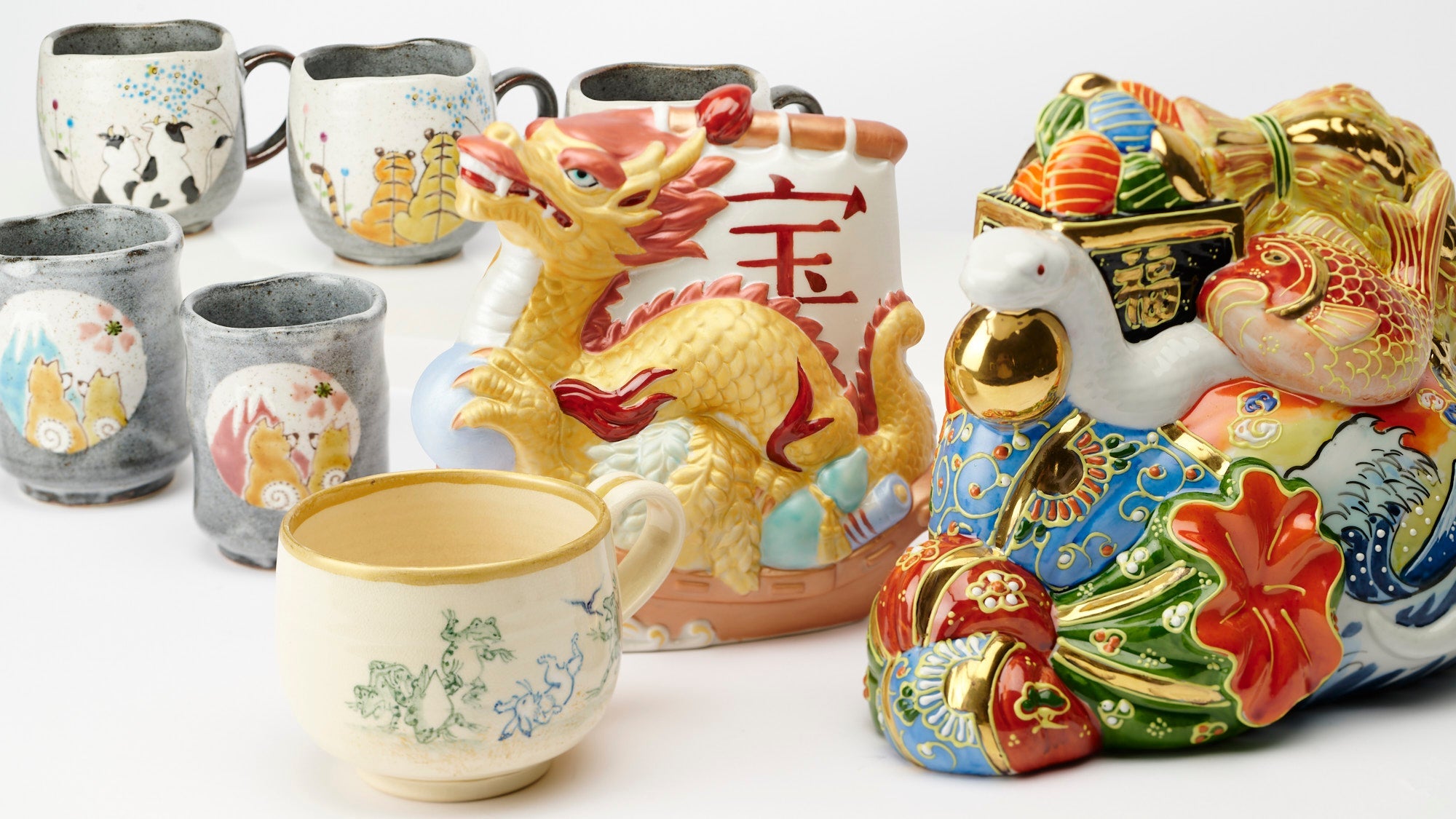
All You Need to Make Matcha at Home
Written by Team MUSUBI
More and more people are looking to have authentic matcha tea-making experiences at home. With a few essentials, you can enjoy a delicious homemade bowl of matcha! Here, we will introduce matcha tools along with recommended items from our MUSUBI KILN site to help you get started!
table of contents
What You'll Need
For an immersive matcha experience, it's a good idea to purchase some matcha utensils beforehand. Below is a list of the basics used during traditional tea ceremonies and items available on our website for making matcha at home.

Matcha bowl chawan: A chawan is a wide, deep bowl often made of stoneware or porcelain. It is used for whisking and drinking matcha. The matcha bowl's shape allows for easy whisking and creates a nice frothy texture. We recommend beginners start with a bowl that has a wide base, like the Golden Moon and Rabbit Kutani Matcha Bowl Chawan .
Chasen (bamboo whisk): A chasen is a traditional bamboo whisk used to mix the matcha powder and hot water together. It has thin, delicate tines that help to create a frothy and creamy texture.
Chashaku (tea scoop): A chashaku is a small wooden scoop used to measure the right amount of matcha powder. It is traditionally made from a single piece of bamboo and has a curved shape. The Yatsuyanagi Lacquered Akita Cherry Bark Work Chashaku Tea Scoop is an elegant choice, as its reddish-brown coloring compliments a variety of matcha bowls.
Furui (sieve): A furui is a small sieve used to sift the matcha powder before whisking. This helps to remove any clumps and ensures a smooth texture.
These are the essential tools you will need to prepare and enjoy matcha in the traditional Japanese manner.
We also recommend the items below for those looking to enhance the authenticity of their experience.
Kama (kettle): A kama is a traditional Japanese kettle used to heat water for tea during a traditional tea ceremony. It is usually made of cast iron or copper and has a small handle. Water boiled in iron cast kettles is mellow, adding delicate notes to your tea. While a kama may be hard to come by, you can capture the tea ceremony atmosphere with the Seven Stars Nambu Ironware Cast Iron Teapot. Though not for heating over a flame, simply pouring boiled water into the teapot and placing it on your table elevates the ambiance.
Natsume (matcha container): A natsume is a beautifully-designed, traditional Japanese container used to store sifted matcha powder right before whisking it in a bowl. The Pine Tree Bamboo Plum Yamanaka Lacquerware Natsume Matcha Container is an elegantly-lacquered vessel and an eye-catching decorative item.
Kuse-naoshi (matcha whisk holder): A kuse-naoshi is designed to maintain the shape and longevity of your bamboo whisk, ensuring it stays in ideal condition for future use. The Tosen Kiln Kozan-ji Temple Choju Giga Kiyomizu Ware Matcha Whisk Holder combines functionality with artistry, featuring designs inspired by the famous Choju Giga animal scrolls from Kozan-ji Temple.
How to Make Matcha
When it comes to matcha, of course, the most important ingredient is the matcha powder itself. Look for high-quality, ceremonial-grade matcha powder that is bright green and finely ground. A cozy matcha brew includes one teaspoon of matcha powder and about 60 ml (2 fl oz) of hot water.

First, you'll want to sift the matcha powder into a small bowl. This helps to remove any lumps and create a smooth texture.

Then, use a chashaku or a small spoon to add one teaspoon of matcha powder into your matcha bowl.
Next, slowly pour in the hot water. The water should be slightly cooler than boiling, around 70–80 °C (160–175 °F).

Now, you can use the chasen to whisk the matcha powder and hot water together in a zigzag motion until the mixture becomes frothy and creamy. This should take about 20 to 30 seconds. When whisking the matcha, try to avoid pressing the tips of the chasen against the bottom of the bowl, as it can damage the delicate tines.
You can adjust the amount of matcha powder and hot water based on your preference. If you prefer a stronger flavor, you can add more matcha powder or use less water. If you prefer a lighter flavor, you can add less matcha powder or use more water. Experiment with different amounts and methods to find the perfect matcha recipe for you!
Sip and Enjoy!

Take a moment to appreciate the vibrant green color and rich aroma of the matcha. Proper etiquette suggests holding the chawan with both hands while drinking.
The way to drink matcha is quite simple. The first sip should be small so that you can fully enjoy how it tastes and lingers in your mouth. The flavor and texture of the matcha should be smooth, creamy, and slightly bitter.
After the initial sip, continue drinking the matcha, immersing yourself in its flavors and textures. Finish the last drops with an audible sip. Matcha is meant to be consumed slowly and thoughtfully, so take your time and fully embrace the moment. Once you've enjoyed the last sip, pause to admire the bowl’s design and texture.
While drinking matcha at trendy cafes or at traditional Japanese tea ceremonies is wonderful, preparing your own matcha can be just as rewarding. We encourage you to try making matcha at home and add a personal touch by using your favorite matcha bowl and utensils.







2 comments
@Victoria We sincerely appreciate your kind comment and you made our day! Thank you very much.
Team Musubi
Thank you, beautifully explained and appreciated
Victoria Gurfolino
Leave a comment
This site is protected by hCaptcha and the hCaptcha Privacy Policy and Terms of Service apply.